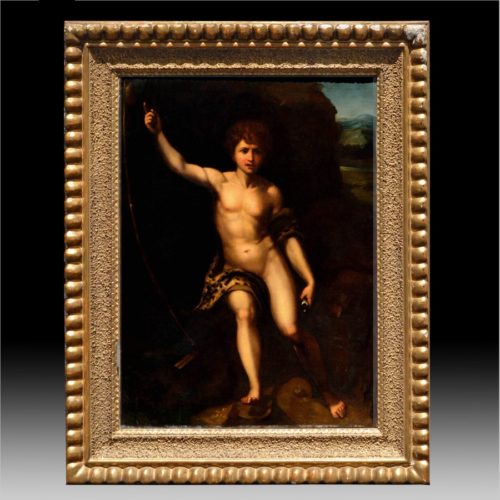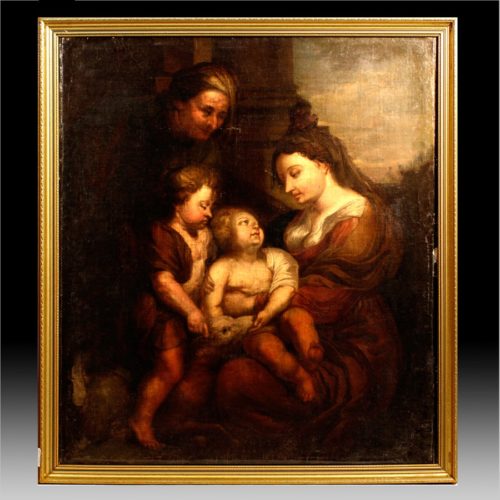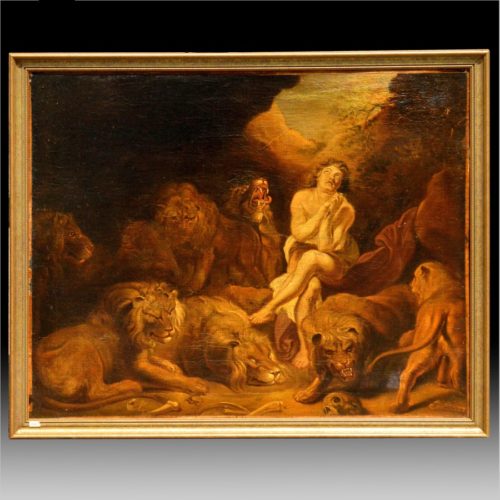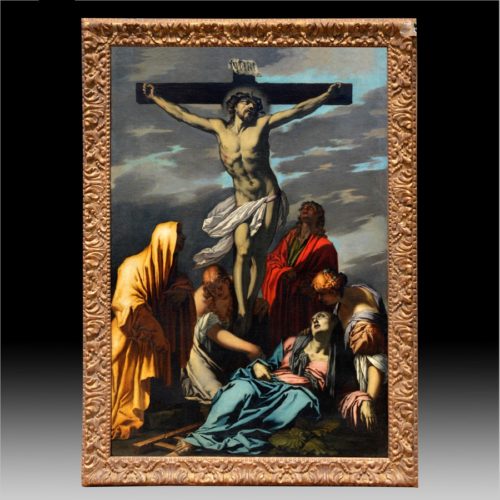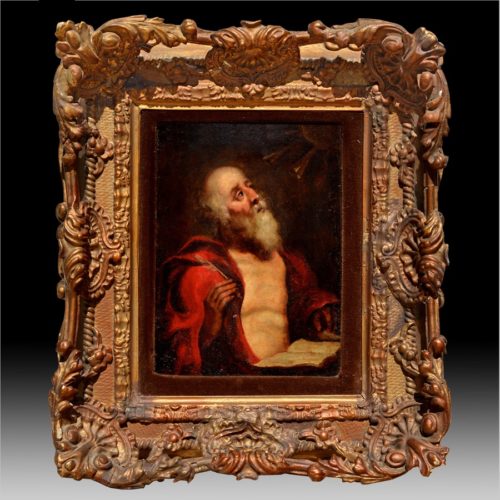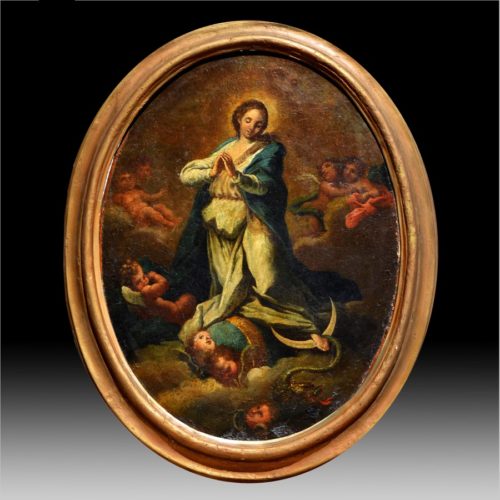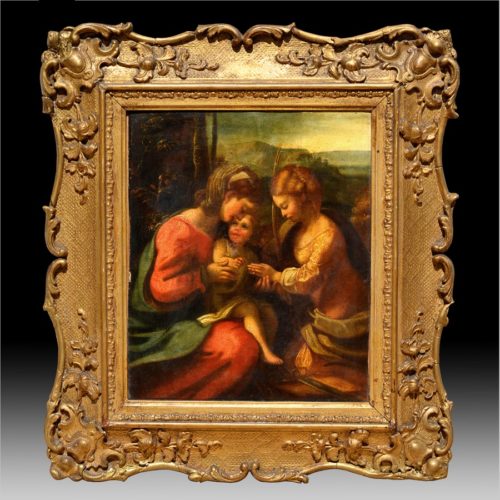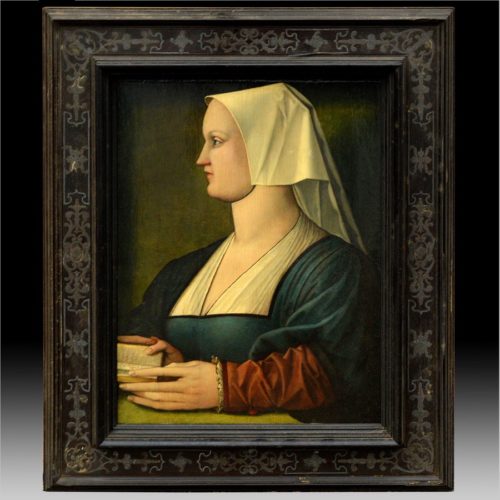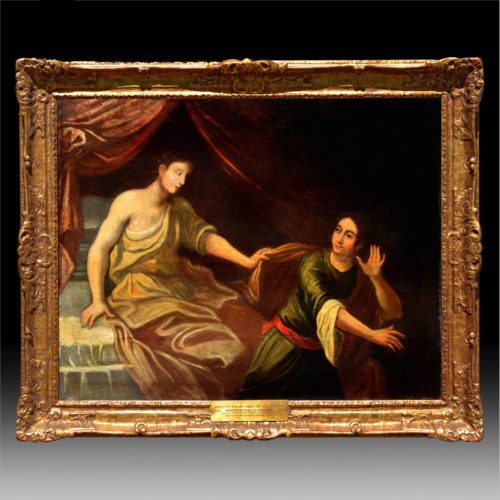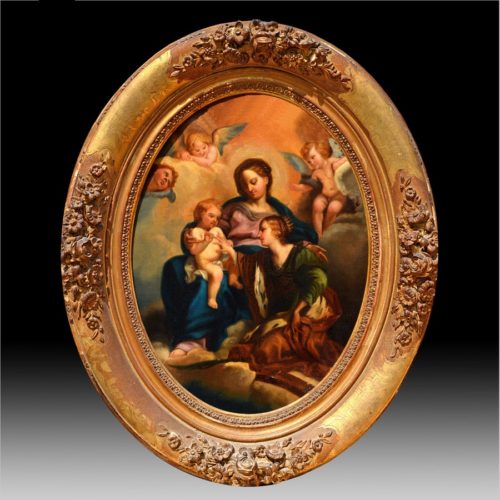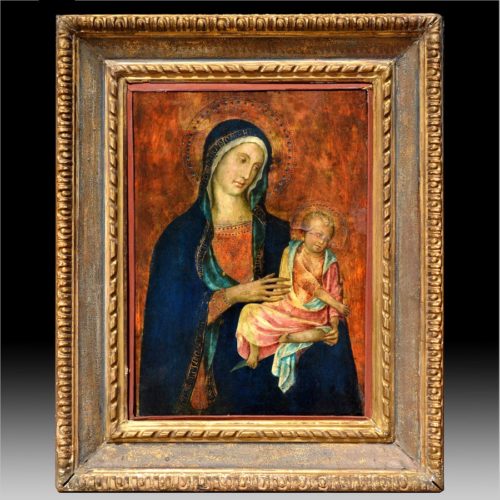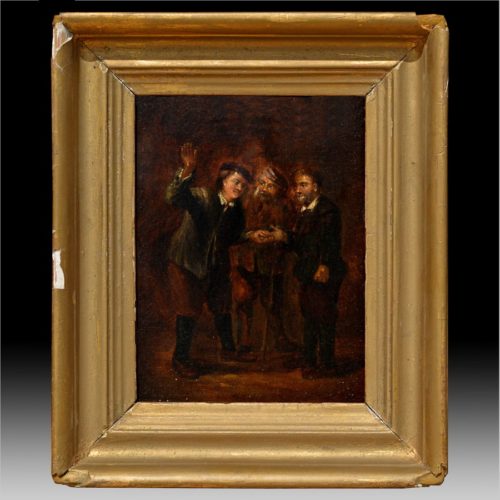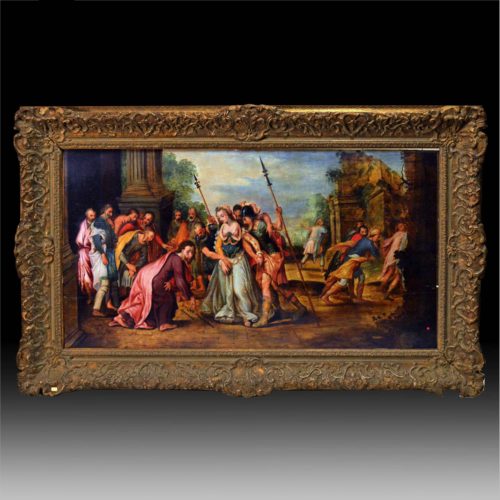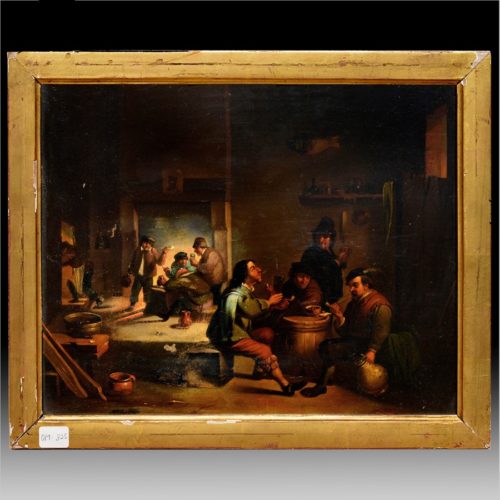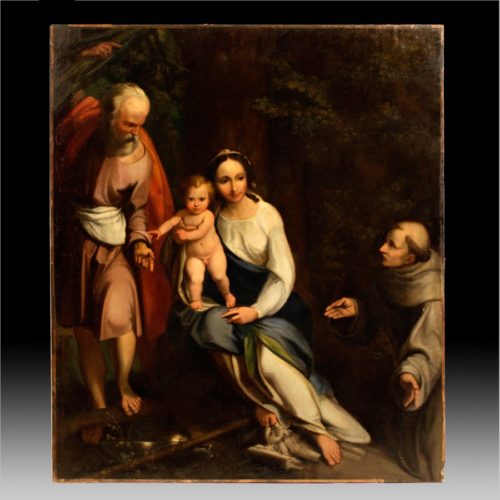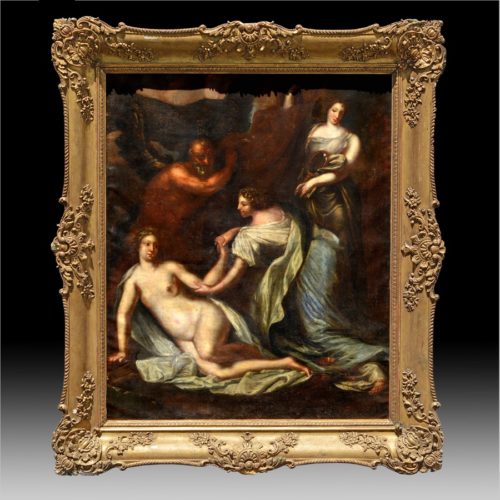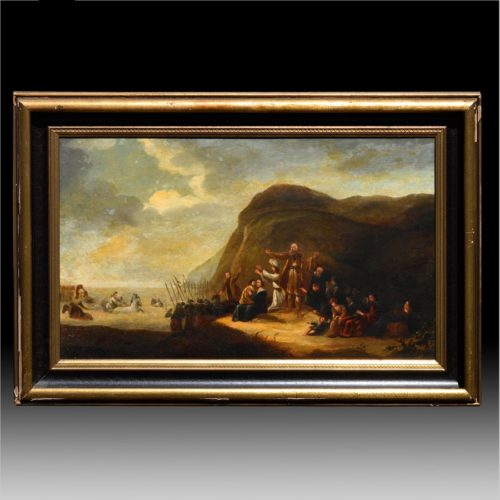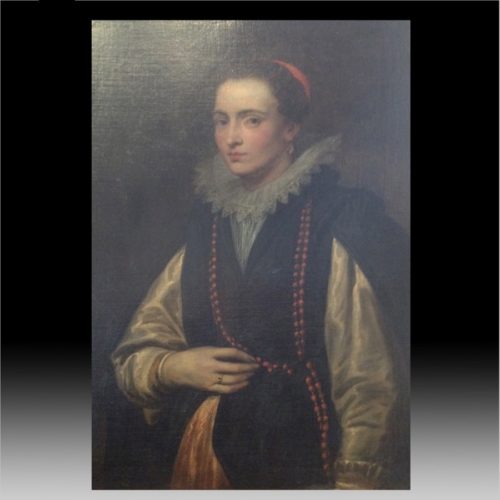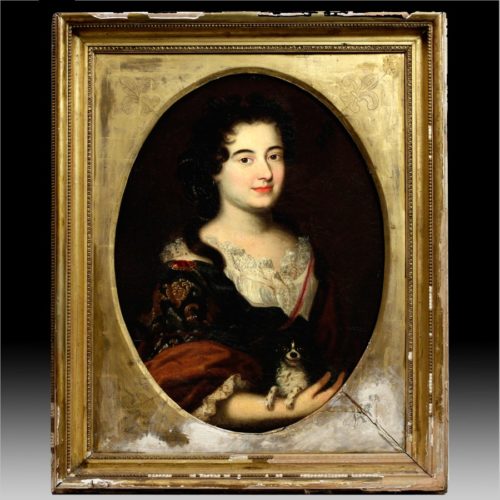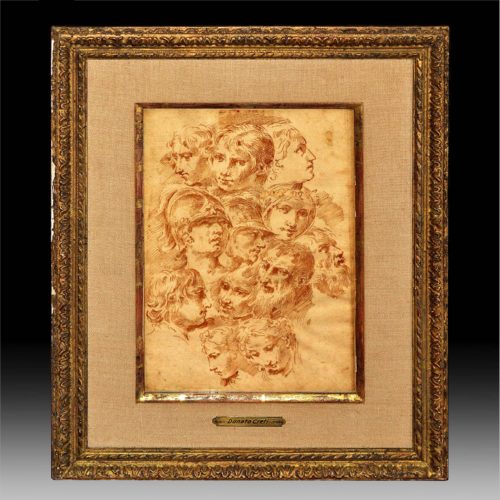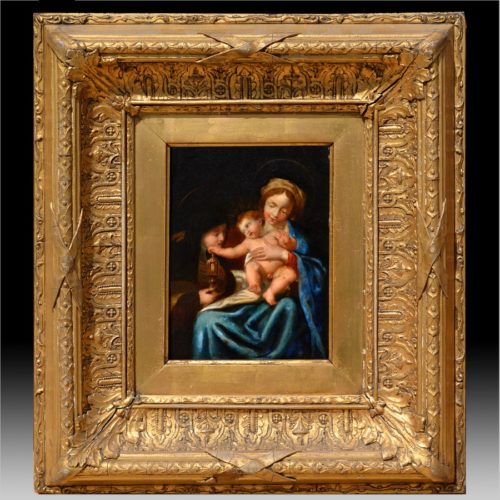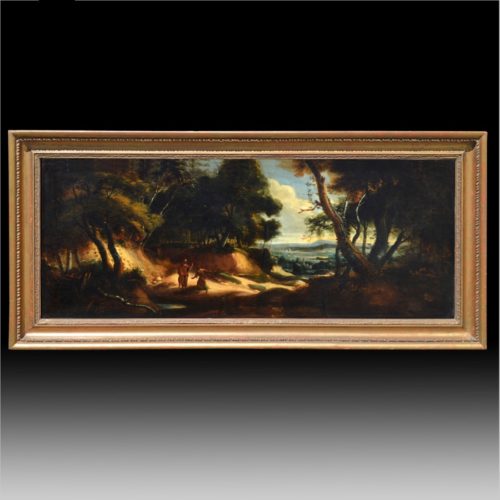-
Sir Peter Paul Rubens ‘Daniel in the Lion’s Den’ oil on canvas, unframed 30 ¼ x 37 in. (76.8 x 94 cm) CL102794-119 328901-2 @Albertson
-
Jan Cornelisz Vermeyen “Portrait of a Lady in Profile Holding A Book” Oil on panel 13 ¾” x 10 ½” (34.9 x 26.7 cm) S71791-86
-
Francesco Di Simone da Santa Croce (1480-1548) “Joseph’s Escape from Potiphar’s Wife” From the collection of Pinero Migliorati Lugano, Taken from Old Church in Northern Italy (one of five). @NB-1040 #88
-
David Teniers ‘The Palm Reader’ oil on panel 6 7/8 x 4 5/8 in. (17.5 x 11.7 cm) CL102794-253 39520-2 @AC-NB
-
David Teniers ‘Topers in a Tavern Interior’ oil on white metal 10 3/8 x 12 ½ in. CL102794-244 318702-2 Price:4,500 @AC-NB
-
Carlo (Vavaliere) Maratta (Italian, 1625-1713) “Time Revealing Truth and Justice” Oil on canvas 53 x 43 ½ inches (134.6 x 110.5 cm) CL102794-128 3108801-2 NB-1040 #49
-
Willem de Poorter (Dutch, b. 1608) “Pharaoh’s Army Drowning in the Red Sea” Oil on panel 20 x 32 ½ inches (50.7 x 82.5 cm) CL102794-108 123802-2 @NB-1040 #16
-
Sir Anthony van Dyck ‘Portrait of the Marchesa Lomellini-Durazzo, three quarter length, in a black Coat and white Sleeves’ oil on canvas 33 5/8 x 24 in. 85.4 x 61 cm. CL102794-266 5115602-2 @AC-sAlbert.
-
Henri Gascars ‘Portrait of a Lady, half length in a blue Dress with a white Chemise and a brown Wrap, holding a Spaniel' Bears inscription on a label on the reverse ‘Mrs. Cunliffe' oil on canvas, in a painted oval 27 x 19 ½ in. 68.6 x 49.5 cm. Henri Gascar (1635 – 1 Jan 1701) (also Gascard, Gascars) was a French-born portrait painter who achieved artistic success in England during the reign of Charles II. He painted many leading ladies at court, including several of the King's mistresses, before returning to Paris. He subsequently relocated to Rome, where he died in 1701. Gascar came to England about 1674, probably at the behest of Louise de Keroualle, Duchess of Portsmouth, Charles II's favourite mistress. Gascar (or Gascard, as he seems to have spelt his name at first) was already known as a skillful portrait-painter; among the portraits already painted by him was that of Nicolas de Lafond, author of the "Gazette of Holland", painted in 1667, and engraved by Peter Lombart. The patronage of the Duchess of Portsmouth ensured Gascar a rapid success in England. His flamboyant style, contrasting with the stolid English approach, seemed to suit the frivolity of the time and he painted many of the ladies of Charles II's court. His lack of attention to detail in the likeness he made up for by the sumptuous draperies and tawdry adornments around the subject. For a short time he became fashionable, and is said to have amassed a fortune of over £10,000.
-
Donato Creti “Studies of Heads” Pen and brown ink on paper 10 ¾ x 7 ¼ inches @NB-1040 #26 Donato Creti (24 February 1671 – 31 January 1749) was an Italian painter of the Rococo period, active mostly in Bologna. Born in Cremona, he moved to Bologna, where he was a pupil of Lorenzo Pasinelli. He is described by Wittkower as the "Bolognese Marco Benefial", in that his style was less decorative and edged into a more formal neoclassical style. It is an academicized grand style, that crystallizes into a manneristic neoclassicism, with crisp and frigid modeling of the figures. Among his followers were Aureliano Milani, Francesco Monti, and Ercole Graziani the Younger. Two other pupils were Domenico Maria Fratta and Giuseppe Peroni.
-
Lodewyck de Vadder ‘The Temptation in the Wilderness’ oil on canvas 17 ¾ x 44 in. (45 x 111.8 cm) CL102794-177 351003-2 @AC-NB

